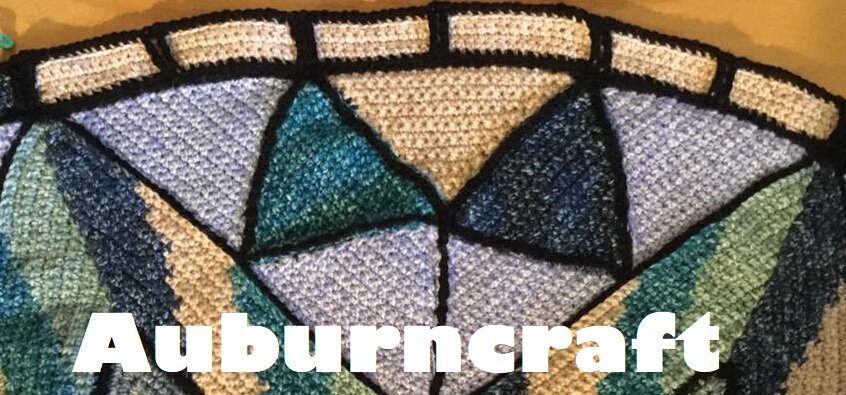Leadlight AFghan
Sometimes no matter how hard you try, your blanket edges come out looking like you had one too many wines before crochet No matter how hard you try, things just end up wonky!
There could be a heap of reasons for this:
Maybe you have joined shapes together and they are a bit in and out in places or maybe you did have that wine!
You could be someone just starting out on the crochet journey, and your edges look a bit like a road in Tasmania (if you have ever been there you will get the reference).
I found after having joined the shapes with my Leadlight Afghan (pictured above), that I wanted it just that bit straighter than it was..
Or like me, on this project I am designing, you find that a Single (US)/Double (UK) Crochet straight into the other colours or work just looks sloppy.
Whatever the reason, this little cheat can solve the problem and give you a lovely straight edge to work the remainder of your border from.
The first thing you need to know to achieve this, is how to Surface Slip Stitch.
How to complete a Surface Slip Stitch (work your stitches closer to the edge, yellow line shows position)
Attach the yarn at your working edge with a slip stitch.
Insert the hook through the face of the work
Pull up a loop from the back of work the through to the front of the work and through the loop on your hook.
Insert your hook into the next stitch . Repeat this around your entire edge. You can either stop at corners and re-attach on the next side or slip stitch around your corner.
How to Surface Slip Stitch
. Once you have that sorted, you can now begin to work your border on a nice straight edge.
Work your next row of stitches (beginning round of your border) into the top loop only,of your Surface Slip Stitch. This is the loop closest to the work edge. It won't matter if you also hook through the main body of your work, as well. This is up to you (I didn't). For my Leadlight Afghan, I did a row of Single Crochet/USA Terms, Double Crochet/Uk Terms. The result is a lovely, straight transition into your border, without messy stitches just worked into the raw edge.
If you find this tip helpful, please buy me a cup of tea! Link on this page.


